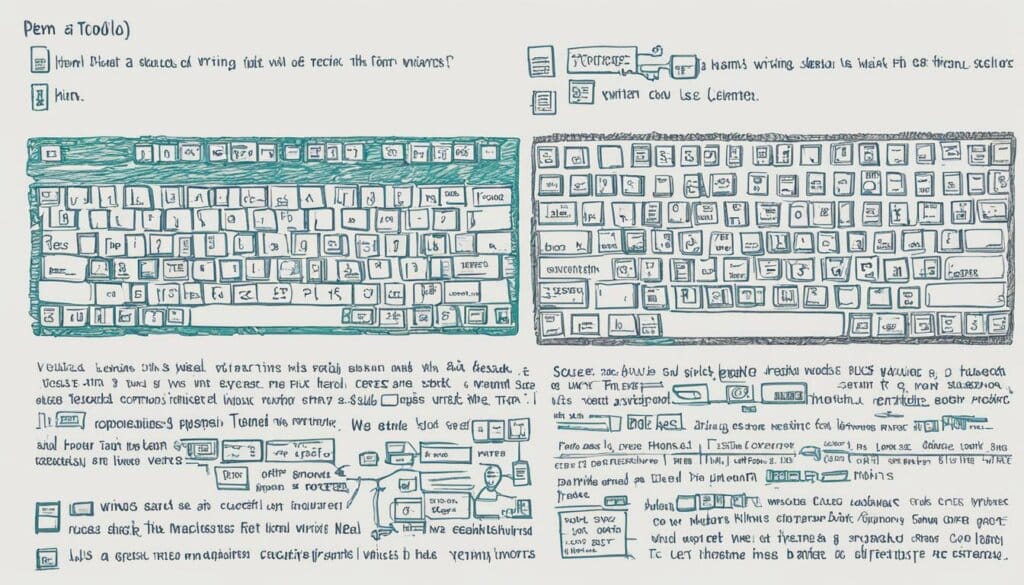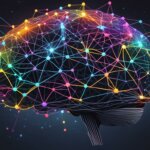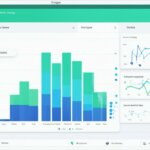Table of Contents
ChatGPT, developed by OpenAI, has become a popular language model utilized in various industries. As its usage continues to grow, it becomes increasingly important to identify whether someone has employed ChatGPT in their communications. Detecting ChatGPT usage ensures authenticity, prevents plagiarism, and avoids the spread of misinformation.
In this comprehensive guide, we will provide you with vital tips on identifying ChatGPT usage. By monitoring ChatGPT activity, analyzing ChatGPT-generated content, and utilizing AI detection tools, you will gain the confidence to determine whether a piece of text has been written by ChatGPT or a human.
Keep reading to learn more about ChatGPT and how it functions, as well as the strategies you can employ to distinguish between human-written and machine-generated text. Discover who can benefit from a ChatGPT checker in various industries, including academia, journalism, publishing, and more.
What is ChatGPT and How Does it Work?
ChatGPT, or Generative Pre-trained Transformer, is a cutting-edge language model developed by OpenAI. It leverages advanced machine learning algorithms to generate human-like text and facilitate intelligent language translation. With its powerful language generation capabilities, ChatGPT demonstrates a profound understanding of context and consistently produces coherent responses.
By utilizing a pre-trained neural network, ChatGPT is able to generate high-quality text that meets the requirements of various applications. From language translation to coding assistance, ChatGPT has proven to be a versatile tool with broad language generation capabilities.
One of the key features of ChatGPT is its intelligent language translation functionality. It can provide accurate and contextually appropriate translations, making it a valuable tool for individuals, businesses, and organizations operating in multilingual environments. Whether it’s translating documents, websites, or real-time conversations, ChatGPT excels in delivering high-quality translation services.
ChatGPT’s ability to produce human-like text and facilitate intelligent language translation has made it an indispensable tool across industries.
With its advanced machine learning algorithms, ChatGPT analyzes input text, comprehends its context, and generates responses that are not only intelligible but also coherent and contextually relevant. This is achieved through a two-step process: pre-training and fine-tuning.
In the pre-training phase, ChatGPT is exposed to a vast amount of text from the internet. It learns to predict words based on their surrounding context, ultimately gaining a deep understanding of grammar, facts, and reasoning abilities.
During the fine-tuning phase, the model is trained on specific tasks and datasets. This fine-tuning process ensures that ChatGPT becomes more adept at generating contextually appropriate responses in real-world scenarios.
Overall, ChatGPT’s language generation capabilities are a result of its extensive exposure to diverse text sources combined with its ability to learn from specific task-oriented training data.
Example Table:
| Features | Benefits |
|---|---|
| Human-like text generation | Produces coherent and contextually relevant responses |
| Intelligent language translation | Facilitates accurate and contextually appropriate translations |
| Versatile language generation capabilities | Meets the requirements of various applications |
ChatGPT’s innovative approach to language generation and translation has revolutionized the way we communicate and collaborate in a globalized world.
Distinguishing Between Human-Written and Machine-Generated Text
When it comes to identifying the origin of a piece of text, distinguishing between human-written and machine-generated content is crucial. Machine-generated text often displays distinct characteristics that set it apart from human-written text.
Characteristics of machine-generated text:
- Less imaginative: Machine-generated text tends to lack the creativity and originality commonly found in human-written content.
- Consistent tone: Machine-generated text typically maintains a uniform tone throughout, lacking the subtle variations seen in human communication.
To accurately detect machine-generated text, AI detection tools play a pivotal role. These tools employ advanced algorithms to analyze language usage patterns and identify key differences between human-written and machine-generated content.
“AI detection tools are essential for distinguishing between human-written and machine-generated text.”
AI detection tools employ predictive algorithms to identify patterns, anomalies, and inconsistencies that indicate machine-generated text. By examining factors such as mechanical language, repetitive phrases, and formulaic patterns, these tools can determine the likelihood of a piece of text being generated by ChatGPT or other AI models.
Utilizing AI detection tools significantly enhances the accuracy of distinguishing between human-written and machine-generated text. By leveraging the power of predictive algorithms, these tools enable users to identify patterns and recognize the unique characteristics of machine-generated content.
| Human-Written Text | Machine-Generated Text |
|---|---|
| Displays creativity and originality | Lacks imaginative elements |
| Varied tone and expression | Consistent tone throughout |
| No formulaic patterns | May exhibit repetitive phrases or formulaic patterns |
“Comparing human-written and machine-generated text can reveal distinct differences in style, tone, and expressiveness.”
By analyzing language patterns and leveraging AI detection tools, it becomes easier to accurately differentiate between human-written and machine-generated text. These tools provide valuable insights that facilitate the detection of AI-generated content and promote the maintenance of authenticity and integrity in written communication.

Image: Distinguishing Between Human-Written and Machine-Generated Text
Who Needs a Chat GPT Checker?
Various industries can benefit from using a Chat GPT checker. Let’s explore who can benefit and why:
Schools and Universities
Academic integrity is essential in educational institutions. With a Chat GPT checker, educators can ensure that student work remains authentic and detects any instances of plagiarism.
Journalists
Journalists strive to deliver accurate and reliable information. By verifying the authenticity of their content using a Chat GPT checker, they can avoid spreading misinformation and maintain their credibility.
Publishers
Publishers often deal with a high volume of articles and content submissions. A Chat GPT checker allows them to efficiently identify AI-generated articles, helping them maintain their credibility and safeguard the authenticity of their publications.
Digital Marketing Agencies
Producing high-quality, engaging content is crucial for digital marketing agencies. By using a Chat GPT checker, they can ensure that the content they create for clients is original and meets the highest standards of quality.
Writers
Writers, whether they are working on novels, essays, or any other form of written content, can benefit from using a Chat GPT checker. It allows them to edit their work effectively, ensuring its originality and minimizing the risk of unintentional plagiarism.
Detecting ChatGPT usage is not limited to these industries alone. Any field or individual that values authenticity, academic integrity, and accountability in their communication can benefit from utilizing a Chat GPT checker.
Strategies for Detecting ChatGPT Usage
Teachers and educators can employ several strategies to effectively detect the usage of ChatGPT in student work. By familiarizing themselves with the unique characteristics of ChatGPT-generated text and analyzing language patterns, they can successfully identify potential AI-generated content.
Familiarizing with ChatGPT output: It is important for educators to become acquainted with the outputs generated by ChatGPT. By studying and understanding the language patterns, style, and tone commonly produced by ChatGPT, teachers can develop a keen eye for distinguishing between human-written and machine-generated text.
Using plagiarism detection tools: Employing reliable plagiarism detection tools such as Copyscape or Turnitin can be invaluable in identifying instances of ChatGPT-generated content in student work. These tools can help highlight similarities between the student’s writing and existing ChatGPT-generated text, enabling educators to take appropriate actions.
Analyzing language inconsistencies: Language inconsistencies and style shifts can be telltale signs of AI-generated text. Educators should pay close attention to abrupt changes in tone, syntax, or vocabulary within the student’s work, as these may indicate the involvement of ChatGPT or similar language models.
Utilizing AI detection software: AI detection software can greatly enhance the capability to detect ChatGPT-based content. These advanced tools employ sophisticated algorithms to analyze language usage patterns and identify inconsistencies that are characteristic of machine-generated text. By leveraging such software, educators can have a more comprehensive and accurate assessment of whether ChatGPT has been used.
“Familiarizing with ChatGPT output, using plagiarism detection tools, analyzing language inconsistencies, and utilizing AI detection software are essential strategies for detecting ChatGPT usage in student work.”
By implementing these strategies, teachers can effectively identify instances where ChatGPT has been used and take appropriate measures to maintain academic integrity and ensure the authenticity of student work.
Conclusion
Detecting ChatGPT usage is crucial for maintaining academic integrity and upholding ethical standards in today’s digital age. By familiarizing themselves with the unique characteristics of ChatGPT-generated text and utilizing various strategies and tools, educators can effectively identify AI-generated content in student work.
It is essential to emphasize critical thinking and teach students to evaluate information from different sources to ensure the integrity of communication. By encouraging students to question the authenticity and originality of their work, educators can nurture a culture of academic honesty.
Through a proactive and well-informed approach, teachers can guide students in the ethical and appropriate use of AI tools. This not only fosters a sense of responsibility, but also helps in creating a knowledge-driven society where AI technologies are used responsibly and with careful consideration of their implications.
FAQ
How can I tell if someone used ChatGPT in their communications?
You can detect ChatGPT usage by monitoring ChatGPT activity, analyzing ChatGPT-generated content, and utilizing AI detection tools to determine if a piece of text has been written by ChatGPT or a human.
What is ChatGPT and how does it work?
ChatGPT is a cutting-edge language model developed by OpenAI. It utilizes advanced machine learning algorithms to generate human-like text and facilitate language translation by demonstrating an understanding of context and producing coherent responses based on input.
How can I distinguish between human-written and machine-generated text?
Machine-generated text tends to be less imaginative, exhibits a relatively consistent tone, lacks diversity, and lacks nuanced expressions. AI detection tools can be used to analyze language usage patterns and recognize key differences in language, such as mechanical language, repetitive phrases, and formulaic patterns.
Who can benefit from a Chat GPT checker?
Various industries can benefit from using a Chat GPT checker, including schools, universities, journalists, publishers, digital marketing agencies, and writers. They can verify authenticity, maintain credibility, produce high-quality content, and ensure the originality of their work.
What strategies can I use to detect ChatGPT usage?
Strategies for detecting ChatGPT usage include familiarizing yourself with ChatGPT-generated text characteristics, analyzing language patterns, using plagiarism detection tools like Copyscape or Turnitin, identifying language inconsistencies and style shifts, and utilizing AI detection software.
How important is it to detect ChatGPT usage in academic work?
Detecting ChatGPT usage is crucial for maintaining academic integrity and upholding ethical standards. By identifying AI-generated content, educators can ensure students’ work is original and teach them to critically evaluate information from different sources.













